Katie Davis – Top 10 Picture Book Summit Moments
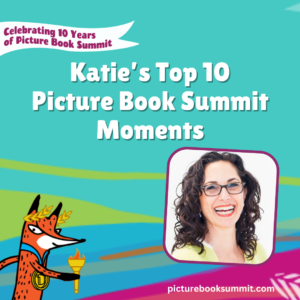 When we first started Picture Book Summit, I had no thought of doing it for a decade. I had no idea how many we would end up helping, both our attendees, as well as the charities we would give a portion of the proceeds. Now, as I look back and think of my top 10 memories of the last 10 years of dozens of brilliant presentations, I’m overwhelmed with options. So I’m lying here. These aren’t my top 10. They are among dozens of stellar memories of Superstar Speakers. But I had to choose 10, so here are the first 10 that popped into mind, in no particular order.
When we first started Picture Book Summit, I had no thought of doing it for a decade. I had no idea how many we would end up helping, both our attendees, as well as the charities we would give a portion of the proceeds. Now, as I look back and think of my top 10 memories of the last 10 years of dozens of brilliant presentations, I’m overwhelmed with options. So I’m lying here. These aren’t my top 10. They are among dozens of stellar memories of Superstar Speakers. But I had to choose 10, so here are the first 10 that popped into mind, in no particular order.
(Did you miss Emma’s Top 10. Catch up here!)
#1 – Paul O. Zelinsky
I remember Paul O. Zelinsky’s poignant reflection of being in his crib at his great-grandmother’s. Over the crib hung a painting she’d made of Hansel and Gretel and he talked about the intense feelings this painting gave him and how you never have such such strong reactions to things again once you’ve grown up.
#2 – Jane Yolen
Jane Yolen’s comment about being called prolific and how she preferred “versatile” because “Prolific always has that whiff of, ‘She does too much, she does too fast, how can it be any good?’ And then there’s the word versatile, which I like better because it means that you can do a variety of things, that you can do them well…”
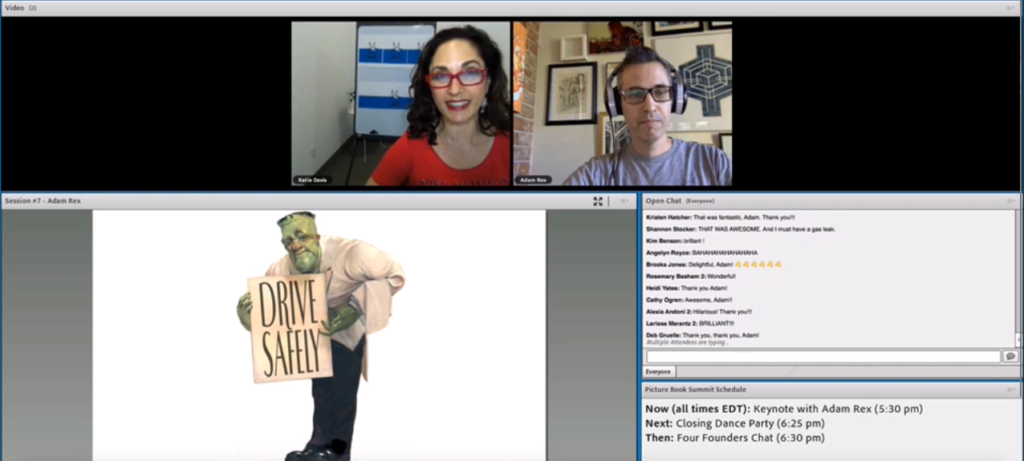 #3 – Adam Rex
#3 – Adam Rex
I still laugh when I think of Adam Rex’s presentation. His delivery was deadpan and hysterically funny. He said at the beginning, “…I agreed to speak about humor in a forum where I can’t hear if you’re laughing or not. Because of that, in general I’m probably
not going to try too hard to make you laugh today. If you find that you’re laughing a lot, then you might have a gas leak.” But a sharp part of his presentation was when he talked about how humor must take us by surprise.
He said, “One of my favorite sentences in the English language comes from a book that I discovered when I was 11. The Hitchhiker’s Guide To The Galaxy by Douglas Adams. If you’re at all familiar with my work, this is probably not a huge surprise to you. This one sentence may have shaped my destiny more than any other sentence I’ve ever read. I feel like this is the sentence that made a light bulb go off and made me think, oh, you can do that with language. It’s the thing that I think set me on a path that culminated, you know, many, many, many years later when I started really trying to write seriously. But nonetheless, I think it sent me on that path. And it’s here at the end of this paragraph about spaceships. ‘The great ships hung motionless in the sky over every nation on Earth. Motionless they hung, huge, heavy, steady in the sky. A blasphemy against nature. Many people went straight into shock as their minds tried to encompass what they were looking at. The ships hung in the sky in much the same way that bricks don’t.’ I think that’s a really lovely surprise, and funny too.”
#4- Matthew Cordell
One year our theme was From Penned to Polished to Published and Matthew Cordell’s preso was called How to Build the Bridge Between Pictures and Story. He was dead-on when he said “…the bridge, really, in a picture book, is where the magic happens. The magic is not alone in the text, the magic is not alone in the pictures, the magic is when you have that synergy between the two. So if you’re writing a story expecting everything great to come out of the story, that’s not a great way to go about writing your picture book manuscript. Or vice versa, if you’re trying to dump all of this into your illustrations thinking that the illustrations are the greatest thing about this book, it’s a disservice, I think, to the work.”
Andrea was talking about nonfiction to kids and they would say they didn’t like nonfiction. She said, “Well, I see your point because first of all anything that begins with “non” sounds non-great and the only great non-thing I can think of is non-fat mayonnaise. So “non” sounds bad to a kid. So I like to say, “All right, let’s not think of nonfiction. Let’s think of books about real people that did real things, that were really cool, that really, really happened. So let’s get rid of that ‘non’ word.” I loved that and never forgot it.
#6 – Kate DiCamillo
After reading Anne Tyler’s The Accidental Tourist, Kate talked about how she desperately wanted to do what Anne Tyler had done with her words, “to reform that alchemy of making the everyday into the extraordinary, and in the process, to make somebody else feel the way the words had made me feel transformed, seen, healed, made whole.”
When she started and then thought, “Wait a minute, I can’t do this,” it stopped her. And it was then she realized the finished, beautiful words were the result of hard work, and that was how you make the magic happen.
You know when you think you’re the only person who [fill-in-the-blank]? Eric and Terry Fan shared something I always do and I loved that! It’s confirmation, right? They said that sometimes the best way to find a story idea is to do something else creative. Anything else other than just trying to actually write a picture book. They said, “The key is that you’re engaging a different creative part of your mind in a new way that isn’t bound to the specific discipline of writing. And by doing that, you free your mind to make connections that it might not ordinarily make.”
#8 – Shadra Strickland
Shadra also shared ways to expand creativity, and I always love to hear about other creatives’ processes to do that. She advised, “Explore a list of 100 things that interest you, 100 things that resonate with you. They can come from your childhood, things that you’ve always been curious about and you wanna do a deep dive on, the mundane pieces of life, and write that down.” Then, when you’re stuck, you look at that list and you can choose something and throw it into your story. Shadra has her students do that, and she said, “It takes months and months and months of banging their heads up against the wall before something cracks in their personal life that resonates with them and changes that story.”
Sometimes it takes someone saying something that may seem obvious but it’s easy to forget. We all want to be unique in our storytelling, and if you can remember, we all want to be unique in our storytelling, and obviously, we all are unique! So I appreciated it when Lesa reminded me (me, the attendee version!) to ask myself what can I bring to my story that only I can tell? She said, “… there are elements of our history, of our personality, of our culture, of our ethnicity, that we bring to a story that lends itself to having a unique perspective when we’re telling a story. And so, those are the things that you should really think about when you’re beginning to write a story.”
#10 – Jon Klassen
Jon talked about how much fear plays a part in his work. I think it may have been the most raw and honest presentation we’ve had in 10 years. It was brilliant. He said, “I hate drawing people, still hate drawing people. When I do draw people, it’s like they’re statuesque almost. The Dark by Lemony Snicket was a great excuse for that. It was a little boy walking around in the dark, but he doesn’t change much even when he’s supposed to be scared. And he’s not really ever supposed to be that scared. But he’s just very blank. This was as much emotion as I could bring myself to show largely because I’m just so afraid of doing books, and showing emotion and drawing like what it is, but like, there’s also me trying to keep a distance from the books and drawing them this way.
And it turns into a style, it turns into your voice because of what I’ve avoided doing. This isn’t a conscious decision to add this. It’s reductive. This is the result of my not wanting to do a lot of things. And this is what I’m left with is a person who can barely show emotion. And you sort of pick stories that suit that and you get lucky in how you sort of frame them.”
Don’t miss any more incredible Picture Book Summit moments. Join us at our 10th Anniversary Picture Book Summit!
Picture Book Summit 2024
Perfect 10: Going for Picture Gold!
October 5, 2024
Early Bird Registration ends 9/6/24!
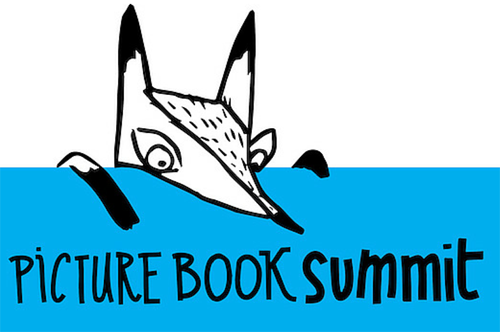


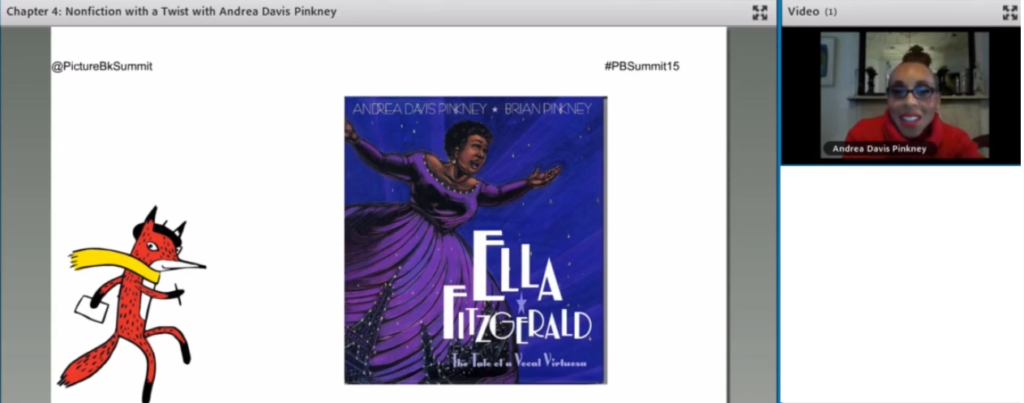
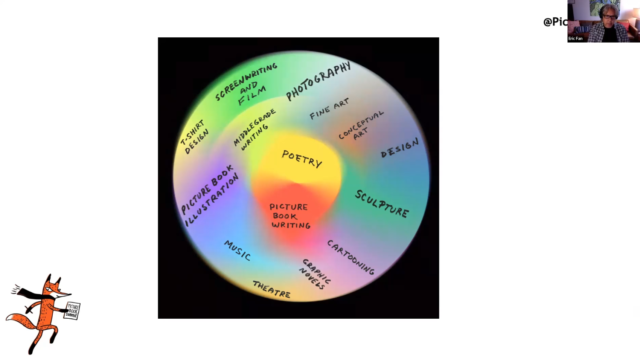
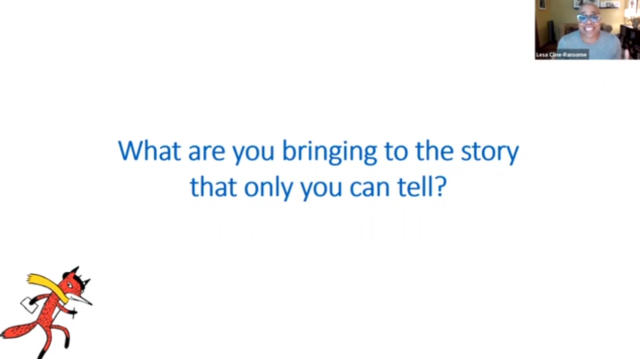
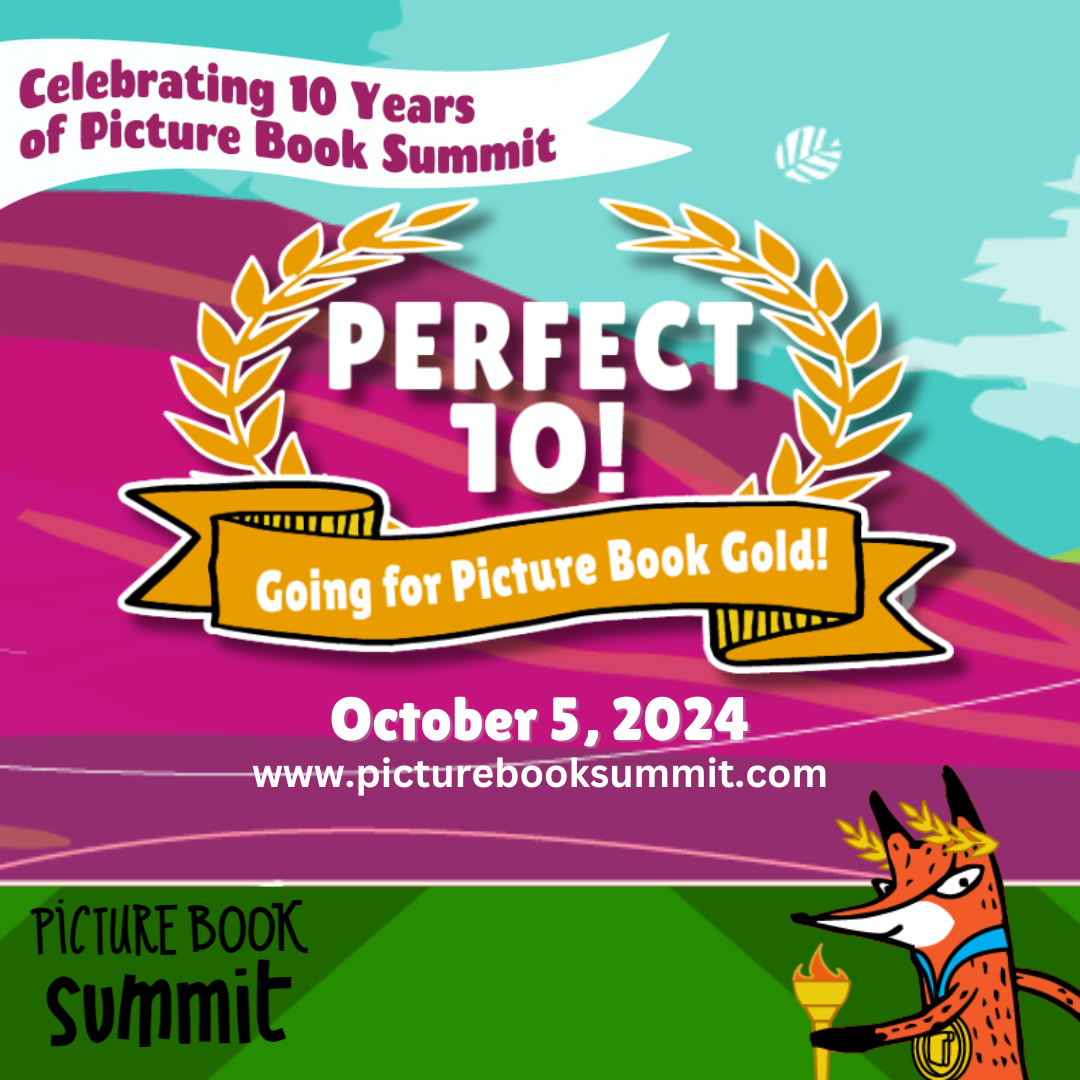

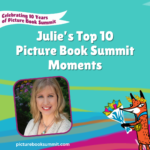
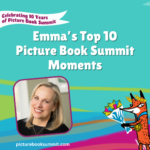


Chelsea DiCicco
September 5, 2024 at 6:36 pmLove this!! Thanks for sharing these highlights 🙂